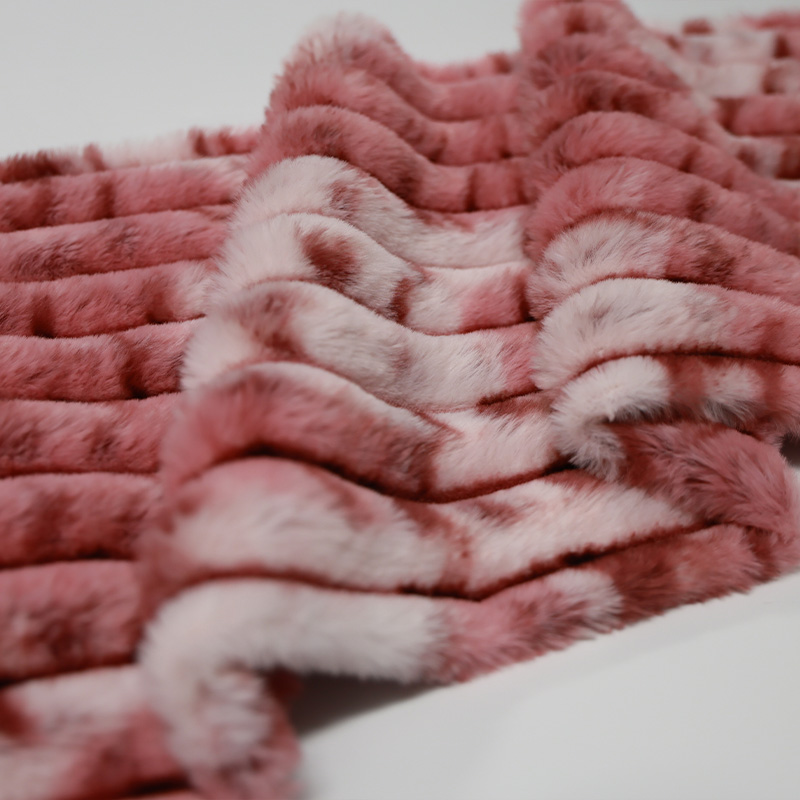











The fashion landscape is a dynamic and ever-evolving field, constantly incorporating new materials and designs to meet the demands of consumers. One such material that has garnered significant attention in recent years is faux rabbit fur. This synthetic alternative to genuine rabbit fur presents a unique blend of aesthetic appeal and practical benefits, yet it also comes with its own set of limitations. This comprehensive analysis aims to explore the merits and limitations of faux rabbit fur in the market, providing a nuanced understanding of its role in contemporary fashion.

Merits of Faux Rabbit Fur
Ethical Considerations: The production of faux rabbit fur does not involve the harming of animals, making it an appealing option for consumers who prioritize ethical fashion. This ethical aspect has become increasingly important in recent years, as more people become aware of the impact of animal-derived materials on animal welfare.
Cost-Effectiveness: Faux rabbit fur is generally more affordable than genuine rabbit fur. This is due to the mechanized production process, which allows for greater efficiency and economies of scale. The cost-effectiveness of faux rabbit fur makes it accessible to a wider audience, enabling more consumers to enjoy the aesthetic appeal of rabbit fur without breaking the bank.
Versatility in Design: Faux rabbit fur offers a high degree of versatility in terms of design and styling. It can be dyed in various colors, textures, and lengths, making it a versatile material for fashion designers. This versatility allows for the creation of a wide range of fashion items, from clothing and accessories to home decor, catering to diverse tastes and preferences.
Ease of Maintenance: Unlike genuine rabbit fur, which requires specialized care and handling, faux rabbit fur is easier to maintain. It can be cleaned using standard washing methods, and it retains its shape and texture well over time. This ease of maintenance extends the lifespan of faux rabbit fur products, making them a practical and sustainable choice for consumers.
Limitations of Faux Rabbit Fur
Quality and Authenticity: While faux rabbit fur has improved significantly in terms of quality and realism, it can still fall short when compared to genuine rabbit fur. Synthetic fibers may lack the natural softness and warmth of real fur, and they may not feel as authentic to the touch. This can be a limitation for consumers who prioritize the sensory experience of their fashion choices.
Durability Concerns: Although faux rabbit fur is relatively durable, it may not withstand the same level of wear and tear as genuine fur. Synthetic fibers can shed or pill over time, especially with heavy use. This can detract from the appearance of the product and necessitate more frequent replacements, increasing the overall cost of ownership.
Allergenic Potential: Some individuals may be sensitive to the materials used in faux rabbit fur. Synthetic fibers can harbor dust mites, allergens, and other irritants, which can trigger allergic reactions in susceptible individuals. This limitation is particularly important for consumers with allergies or skin sensitivities.
Limited Availability and Variety: Depending on the region and market, the availability of faux rabbit fur may be limited. Additionally, the variety of colors, textures, and lengths may not be as extensive as with genuine rabbit fur. This can limit the options available to consumers and designers, affecting the creativity and diversity of fashion choices.
In conclusion, faux rabbit fur presents a range of merits, including ethical considerations, cost-effectiveness, versatility in design, and ease of maintenance. However, it also comes with limitations, such as quality and authenticity concerns, durability issues, allergenic potential, and limited availability and variety. As the fashion industry continues to evolve, consumers and designers will need to weigh these factors carefully when making purchasing and design decisions. Ultimately, the balance between merits and limitations will determine the role of faux rabbit fur in the market and its potential for growth and development in the future.